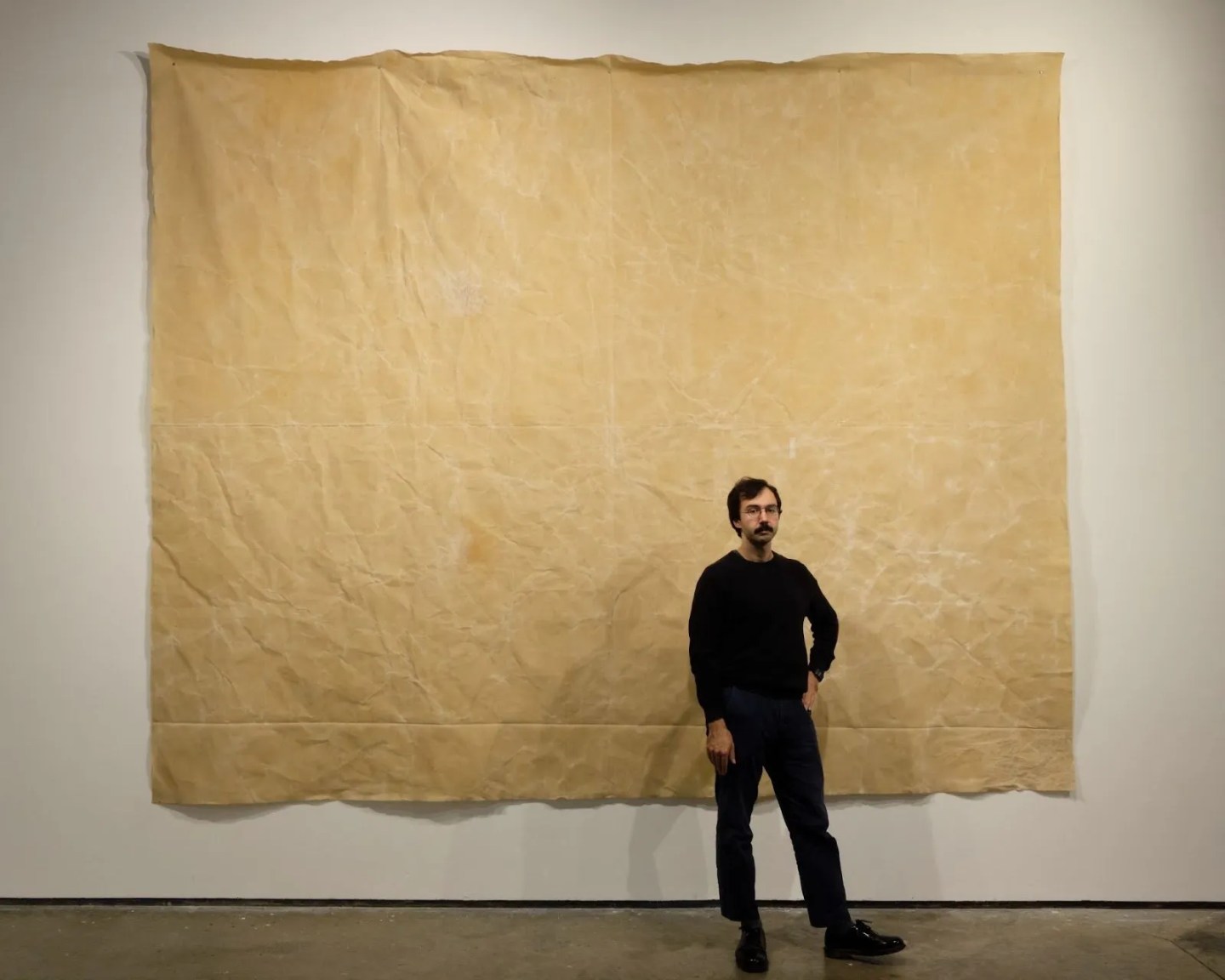
Can Yağız, a noteworthy contemporary artist, is one to watch in 2025. He recently showed at Perrotin in New York City, and crafts evocative memory landscapes through a unique blend of drawing, printmaking, and paper-based works. In fact, his art delves into the subjective dimensions of memory. He transforms personal recollections into tangible, visually compelling narratives.
Yağız, who recently graduated from Yale School of Art, incorporates discarded materials, such as crumpled paper, used wrappers, and receipts. Through this, he contemplates themes of belonging, selfhood, and decay. It is through this that he transforms personal recollections into tangible and evocative visual narratives.
A Journey Through Memory’s Tapestry
Yağız has exhibited at the Ely Center of Contemporary Art in New Haven, John Fonda Gallery, Baltimore, and Perrotin in New York City. He is making waves in the art scene for portraying moments from his past through imagery… And imbues them with a sense of both distance and introspection. He doesn’t simply respond to memories. Instead, he filters them through the lens of personal experience, transforming familiar landscapes into symbols of the past.

This process allows viewers to connect with the artist’s subjective experience, prompting their own interpretations. The artist’s approach is not about literal accuracy, but the recollection of a particular, often mysterious, memory.
The Impact on the Viewer: Evoking A Response
Yağız’s work is not simply an objective representation of memory; it’s an exploration of its emotional complexities. Indeed the artist’s use of drawing, printmaking, and paper-based techniques creates an immersive experience for the viewer. The viewer is invited to engage with the work on a personal level. Moreover, the viewer is encouraged to connect with the artist’s emotional journey, fostering a sense of connection. This interplay between the artist’s subjective experience and the viewer’s interpretation is central. It enhances the power and impact of Yağız’s work.
The Power of Printmaking: Capturing Ephemeral Moments
Collecting found objects serves as a crucial foundation for Yağız’s artistic exploration. He employs a variety of collage techniques, from incorporating soot and wax on newsprint, which is mended with numerous items. In other artworks, he also uses an Aquatint monotype technique. Aquatint is a printmaking method akin to etching, involving the utilization of acid to incise the printing plate.

In this technique, acid-resistant resin in powdered form is dispersed over the plate and then heated to ensure adhesion. Through the interaction of acid and resin, intricate textured designs are formed, yielding nuanced tonal variations in the final print. Typically, aquatint is employed in conjunction with other traditional printmaking techniques like etching or engraving.
Printmaking: Amplifying the Narrative Through Repetition and Variation
Printmaking plays a pivotal role in amplifying the impact of Yağız’s work. By creating multiple impressions, he transforms the initial drawing into a series of variations, each subtly different from the others. This process not only increases the visual impact but also highlights the inherent multiplicity of memory. A single memory, for instance, might be revisited through different prints. Each captures a slightly different aspect of the recollection—perhaps a shift in mood or perspective. Likely mediums used are lithography, etching, Aquatint, or screen printing. Each offers unique possibilities for texture and visual depth.
Paper as a Canvas and a Catalyst for Transformation
Paper, for Yağız, is more than just a surface for his artwork. It’s a material that actively participates in the creative process. His use of various papers, from textured handmade papers to smooth, archival stock, contributes to the overall aesthetic and emotional impact of the piece. The tactile qualities of the paper, its weight, and grain can evoke specific sensory experiences associated with the memories depicted. Folding wax paper is one technique we can find in his work, “Fold, go, unfold,” from 2022. Here, the creases left from folding the wax paper tell their own story of history and memory. Yağız’s artwork prompts introspection and fosters a deeper appreciation for the subjective dimensions of memory. The artist’s ability to translate personal experience into universal visual language makes his work not just aesthetically pleasing. It is also intellectually stimulating and emotionally resonant.
Visit Can Yağız’s website at cyagiz.com and on Instagram @psst.huh

